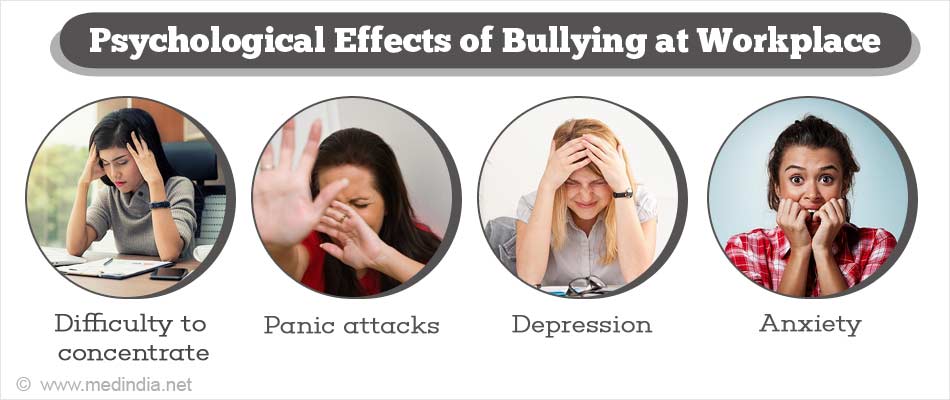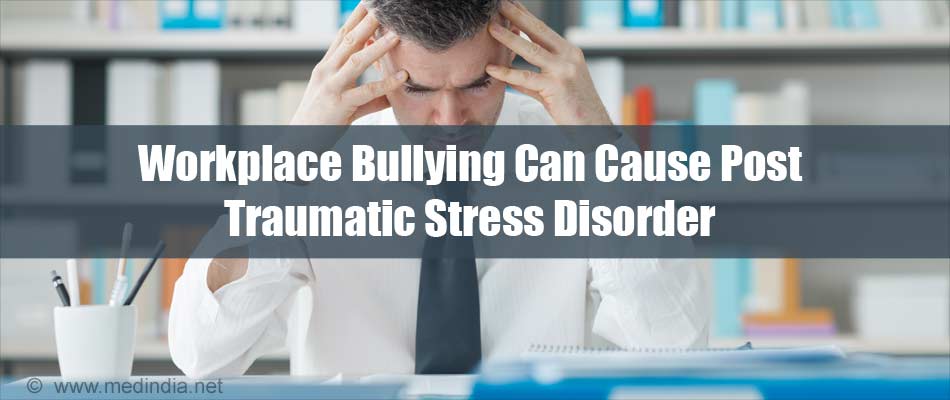- Workplace bullying: Violence, Harassment and Bullying Fact sheet - (https://www.humanrights.gov.au/workplace-bullying-violence-harassment-and-bullying-fact-sheet)
- Prevention and Intervention of Workplace Bullying in Schools - (http://www.nea.org/assets/docs/workplace-bullying-report.pdf)
- The WBI Definition of Workplace Bullying - (http://www.workplacebullying.org/individuals/problem/definition/)
- Symptoms of Post Traumatic Stress Disorder (PTSD) - (http://bullyonline.org/old/stress/ptsd.htm)
What is Workplace Bullying?
Workplace bullying is a repeated abusive conduct that is physical, verbal or psychological occurring in the workplace. This is a deliberate and disrespectful behavior by the employer, manager or group of people at the workplace.
Workplace bullying includes tactics such as threats, beatings, being humiliated, shouted at, being intimidated, work interference, stalked, and obscene phone calls.
According to the National Institute for Occupational Safety and Health (NIOSH) workplace bullying is one form of workplace violence. Bullying can leave a lasting impact on victims and is harmful not only to the targeted individual but also to the organization.
Bullying used to be associated with school age children. However, it also happens in offices, shops, restaurants, hospitals, hotels, schools, colleges, government organizations where there is a large gathering of employees of all ages.
Mostly bullying is mostly done face to face, by letter, email or phone. But with the use of information and communication technology cyber bullying is also on the rise.
Workplace Bullying Statistics
- Approximately 81% of bullying at the workplace was done by people in higher positions than the people they picked on.
- 57% of bullying targets are women. Divorced and single women are more at risk.
- 24% of employees have reportedly been bullied in the workplace and an additional 12% say they have witnessed workplace bullying. Usually a bully might focus on a single person, or a group of bullies may single out a co-worker.
- 60% of men are more likely to participate in aggressive bullying behavior.
- When the bully is a woman her victim is 71% more likely to be a woman as well.
- Research indicates that women are more affected by PTSD [post traumatic stress disorder] than men.
What are the Signs of a Workplace Bully?
Research by the Workplace Bullying Institute, suggests that the following are the most common workplace bullying tactics:
- Publicly humiliating a person by displaying behavior such as yelling, screaming, throwing tantrums
- Constantly finding fault or criticizing the person without valid reason, meting out unfair treatment
- Constant, personal verbal assaults on victim’s character, name calling
- Socially isolating an individual
- Spreading malicious and false rumors
- Belittling the person’s opinions
- Manipulating the impression others have of you, spoiling your reputation
- Making offensive verbal or written remarks and jokes about the person. Spreading malicious gossip or rumors to defame the person
- Undermining a person’s work and capability, denying promotion opportunities or threatening job loss
- Removing areas of responsibility without cause or business rationale, giving pointless tasks not related to work field
- Falsely accusing someone of mistakes not committed
- Ignoring views and opinions
- Threatening or intimidates by gestures such as staring, glaring showing hostility
- Discredits the high quality of work or lies about person’s performance. Steals credit from skilled employees and takes unfair advantage for work done by others
- Singles out and isolates the person socially
- Passes sexually explicit comments and requests that make the victim uncomfortable
- Deliberately withholds information needed to get work done properly
- Creates unrealistic demands. Assigns tasks with impossible deadlines or targets
- Passes insults based on gender, race, accent, age or language, disability
What are the Effects of Bullying in the Workplace?
Bullying at the workplace negatively affects the victim, as well as the people who observe it. Effects on the workplace include lower productivity and high absentee rates. It results in lowering of morale of the employees.
The willingness to try out new innovative work methods and creativity is lost. The victim will dread going to work and may question his or her competency. This will lower his or her confidence and ability to perform at highest potential. Also the person may not be able to trust his or her employer as well as the people with whom they work.
The victim may experience psychological health issues such as stress, being scared, difficulty in concentration, panic attacks, mood swings, depression, suicidal thoughts, anxiety from dealing with and anticipation of the next negative event. This may directly affect the victim’s social life and relationships.
Physical effects include migraine headaches, backache, chronic fatigue syndrome, irritable bowel syndrome and sexual dysfunction. Sleep disturbances and insomnia are also commonly reported by the victims.

Can you get Post Traumatic Stress Disorder (PTSD) from Workplace Bullying?
Stress is the most predominant health effect associated with bullying in the workplace.
Post Traumatic Stress Disorder (PTSD) is a type of anxiety disorder which occurs after any type of violence including workplace bullying and can show up in a person’s lifelong after, even when the bullying has ended.
Research indicates that 77% of victims experience PTSD. In fact, a large number of victims experienced PTSD similar to that of domestic violence and child abuse.
Research indicates that workplace stress has significant negative effects that result in poor mental and physical health. Loss of self confidence, clinical depression, sadness, shame, suicidal thoughts can result from prolonged mental trauma. PTSD may also result in sleep problems such as Insomnia, disturbed sleep and having nightmares.








